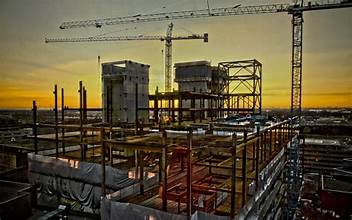Welcome to our decorating journey where we dive into the wonderful world of paint! Our painters and decorators in gloucester Whether you’re giving your home a fresh makeover or adding a pop of color to your space, choosing the right type of paint is crucial. Let’s explore the various options available to unleash your inner artist and transform your home into a masterpiece.
1. Emulsion Paint: Emulsion paint is the most common type used for interior walls and ceilings. It’s water-based, making it easy to clean up with water and soap, and it dries relatively quickly. Emulsion paint comes in various finishes:
◦ Matt: Provides a non-reflective finish, perfect for hiding imperfections on walls and ceilings.
◦ Silk: Offers a subtle sheen that reflects light, ideal for kitchens, bathrooms, and high-traffic areas.
◦ Gloss: Delivers a shiny finish, best suited for woodwork such as doors, skirting boards, and trim.
2. Acrylic Paint: Acrylic paint is versatile and can be used for both interior and exterior projects. It dries quickly, has low odor, and is easy to clean up with water. Acrylic paint comes in a wide range of colors and finishes, including matte, satin, and gloss. It’s suitable for walls, wood, metal, and even canvas for DIY artwork.
3. Chalk Paint: Chalk paint has gained popularity for its rustic, matte finish and its ability to adhere to almost any surface without priming or sanding. It’s perfect for achieving that vintage, shabby-chic look on furniture, cabinets, and decorative items. Chalk paint also allows for easy distressing techniques to create a weathered appearance.
4. Oil-Based Paint: Oil-based paint provides a durable and high-gloss finish, making it suitable for trim, doors, and other woodwork. It takes longer to dry and has a strong odor, so adequate ventilation is essential during application. Oil-based paint is highly resistant to wear and tear, making it ideal for areas prone to moisture and heavy use.
5. Spray Paint: Spray paint offers convenience and precision for small projects, intricate details, and hard-to-reach areas. It’s available in a wide range of colors and finishes, including metallic and specialty textures. Spray paint is suitable for various surfaces such as wood, metal, plastic, and even fabric, allowing for endless creative possibilities.
6. Specialty Paints: Specialty paints cater to specific needs and design preferences:
◦ Magnetic Paint: Transforms any surface into a magnetic board, perfect for creating interactive walls in kids’ rooms or home offices.
◦ Glow-in-the-Dark Paint: Adds a fun and whimsical touch to ceilings, murals, or accent features, glowing softly in the dark.
◦ Chalkboard Paint: Turns surfaces into a writable chalkboard, ideal for kitchens, playrooms, or creative spaces.
Remember, the key to a successful painting project lies in proper preparation, including cleaning, priming, and choosing the right tools for the job. Don’t be afraid to experiment with different colors, finishes, and techniques to personalize your space and bring your decorating vision to life. Happy painting!…
A Guide to Choosing the Right Construction Materials
In the world of construction, the choice of materials plays a critical role in determining the quality, longevity, and functionality of a building. The selection of construction materials is not a decision to be taken lightly; it requires careful consideration of various factors, including the project’s budget, environmental impact, and the intended purpose of the structure. In this guide, we will explore the key aspects to consider when choosing the right construction materials.

- Project Type and Purpose
Before delving into the specifics of construction materials, it is essential to identify the project type and its intended purpose. Different structures serve various functions, and these purposes often dictate the choice of materials. For example, residential buildings may use materials that prioritize aesthetics and comfort, while industrial structures might prioritize durability and cost-effectiveness.
- Budget Constraints
One of the most significant factors in material selection is the project budget. It’s crucial to find a balance between quality and cost-effectiveness. While high-quality materials may be more expensive upfront, they can save money in the long run by reducing maintenance and replacement costs. However, the budget must be realistic and account for both material costs and skilled labor required for their installation.
- Durability and Longevity
The durability of construction materials is a paramount consideration, especially in regions with extreme weather conditions. Different materials have varying lifespans and resistance to factors like moisture, temperature fluctuations, and wear and tear. For instance, steel and concrete are renowned for their durability, making them suitable for high-stress applications.
- Environmental Impact
In today’s world, sustainability and environmental concerns are increasingly important when selecting construction materials. Many environmentally friendly options are available, such as reclaimed wood, recycled steel, and energy-efficient insulation. Sustainable materials not only reduce the project’s carbon footprint but can also lead to cost savings through energy efficiency.
- Local Climate and Conditions
The climate and geographical location of the construction site should influence material selection. In regions prone to earthquakes or hurricanes, materials with high seismic and wind resistance are essential. Conversely, in areas with extreme temperature variations, materials that provide good insulation and thermal resistance should be chosen to maximize energy efficiency.
- Aesthetics and Design
The visual appeal of a structure is another significant factor, particularly for residential or commercial buildings. The choice of materials can greatly impact the aesthetics of a project. Considerations such as color, texture, and architectural style must align with the design vision. Natural materials like stone and wood often provide a timeless and elegant look, while modern designs may incorporate glass and steel for a sleek appearance.
- Maintenance Requirements
Every material comes with a specific set of maintenance requirements. Some materials, such as wood, require regular staining or sealing to protect against decay and insect damage. Others, like concrete, may need periodic sealing to maintain their integrity. Maintenance costs and efforts should be factored into the decision-making process to ensure the long-term sustainability of the structure.
- Availability and Accessibility
The availability of materials in the local market is a practical concern. Shipping materials from distant locations can increase costs significantly. It is essential to ensure that the chosen materials are readily available and accessible in the area, which can also streamline the construction process and reduce delays.
- Regulatory Compliance
Construction projects must adhere to building codes and regulations set by local and national authorities. These codes often dictate the types of materials that can be used and may require certain certifications or testing. Compliance with these regulations is not only a legal requirement but also ensures the safety and quality of the finished structure.
- Energy Efficiency
As energy costs rise and environmental concerns mount, energy-efficient materials are gaining popularity. Materials like double-glazed windows, reflective roofing, and well-insulated walls can significantly reduce energy consumption, resulting in lower utility bills and a reduced carbon footprint.
- Health and Safety Considerations
The safety of the people who will occupy or work in the building is of utmost importance. Certain materials can emit harmful substances or contribute to poor indoor air quality. Ensure that the chosen materials are safe for human health and do not pose any significant risks.
- Recyclability and Disposal
Consider the end of life for the materials you choose. Many construction materials can be recycled or repurposed, reducing waste and the impact on landfills. Choosing recyclable materials not only aligns with sustainability goals but can also have financial benefits through recycling programs.
- Future Expansion and Renovation
Anticipating future needs is a wise approach when selecting construction materials. Consider the potential for expansion or renovation and how the chosen materials will affect these processes. Flexible and adaptable materials can simplify future modifications to the structure.
- Consultation with Experts
Choosing the right construction materials can be a complex task. Seeking the guidance of architects, engineers, and construction professionals is often essential. These experts can provide valuable insights and recommendations tailored to your specific project’s needs and goals.
- Testing and Quality Assurance
Before committing to large-scale use of any construction material, it is prudent to conduct tests to ensure it meets the desired standards and performance requirements. Quality assurance and testing should be an integral part of the material selection process.
- Life-Cycle Cost Analysis
Beyond the initial cost, it’s crucial to conduct a life-cycle cost analysis. This assessment considers the cost of materials, installation, maintenance, and any potential energy savings or losses over the life of the building. It helps in making informed decisions about the overall financial impact of material choices.
In conclusion, selecting the right construction materials is a complex decision that requires careful consideration of various factors. The ideal materials should align with the project’s purpose, budget, climate, and environmental concerns while also ensuring safety, durability, and aesthetic appeal. Consultation with experts and a thorough analysis of the long-term implications of material choices are crucial to making informed decisions. By addressing these considerations, construction professionals can ensure that the structures they build not only stand the test of time but also contribute to a sustainable and resilient built environment.
…
